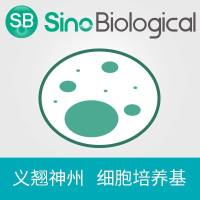In Vitro Transcription and Translation in a Cell-Free System from Clostridium tetani
Clostridial DNA is known to contain a high [A + T] content (1 ). Cloning of several clostridial neurotoxin genes revealed that such genes contain about 73% [A + T] in the coding region and up to 85% [A + T] in the noncoding regions (2 –4 ). The bias for [A + T]-rich codons may impose difficulties in expressing portions of such genes in Escherichia coli or eukaryotic cells. In addition, mRNA containing 70–80% [A + U] is likely to be processed by nuclear enzymes involved in splicing or degradation of short-lived mRNA (5 , 6 ). The combined transcription/translation system from E. coli did not give satisfactory results with tetanus toxin (TeTx)-specific DNA (Fig. 1 ). Translation of in vitro transcribed TeTx-specific mRNA in reticulocyte lysate or wheat-germ extract yielded truncated products arising from internal initiation of translation and premature termination of translation (7 ). For these reasons, we initiated a study to express particular fragments of TeTx in a cell-free transcription/translation system generated from a nontoxigenic strain of Clostridium tetani (7 ). The cell-free system is prepared in analogy to the Zubay system from E. coli (8 ) with modifications. The cells are lysed with a French press and centrifuged at 30,000g. The resulting supematant (S30 extract) is supplemented with amino acids, nucleotides, tRNA, and salts. In contrast to the other translation systems, this system yielded predominantly full-sized polypeptides.
![预览]()






